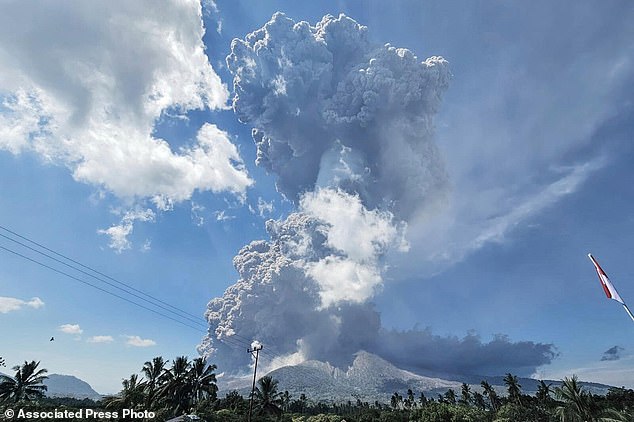
Colossal Volcanic Eruption Spews 63,000-Foot Toxic Ash Cloud, Prompting Urgent Emergency Alerts
Indonesia’s Mount Lewotobi Laki-Laki Erupts, Spewing Massive Ash Cloud
(Include photo: Mount Lewotobi Laki-Laki erupting, ash plume towering over Flores Island. Caption: A 63,000-foot ash column erupts from Mount Lewotobi Laki-Laki, July 7, 2025. Credit: Indonesia’s Geological Agency.)
Indonesia’s Mount Lewotobi Laki-Laki, a 5,197-foot volcano on Flores Island, erupted violently on July 7, 2025, belching a toxic ash cloud up to 63,000 feet into the sky. The eruption triggered evacuations, flight cancellations, and warnings of deadly volcanic hazards.
Immediate Impact and Warnings
The eruption at 11:05 a.m. local time sent ash raining over villages, forcing dozens to flee. Authorities raised the alert level to maximum, urging residents within 3.7 miles (6 km) to evacuate and use face masks to avoid inhaling ash. Muhammad Wafid of Indonesia’s geology agency emphasized the volcano’s “very high” activity, including continuous tremors and risks of hot gas clouds.
(Include photo: Ash-covered village with residents evacuating. Caption: Ash blankets a village near Mount Lewotobi Laki-Laki, prompting evacuations.)
Flights to Bali from Australia, including Qantas and Virgin Australia routes, were canceled due to ash hazards. While Bali’s Ngurah Rai Airport remained operational, further disruptions were anticipated.
The Twin Volcano and Eruption History
Mount Lewotobi is a twin volcano, featuring peaks named Laki-Laki (“male”) and Perempuan (“female”). The more active Laki-Laki lies 1.3 miles northwest of its counterpart. The volcano has erupted repeatedly since late 2023, including a November 2024 blast that killed nine people and displaced thousands.
(Include photo: Satellite image of twin peaks. Caption: The twin volcanoes, Lewotobi Laki-Laki and Perempuan, Flores Island.)
Hazards: Toxic Gas and Lahar Floods
Volcanic ash clouds contain fine rock particles, gases like carbon dioxide, sulfur dioxide, and water vapor. While mostly harmless, concentrated gases pose respiratory risks. Authorities also warned of lahars—deadly mudflows of volcanic debris and rainwater—that could surge through valleys.
Indonesia’s Geological Risks
Indonesia, home to 120 active volcanoes, sits on the Pacific “Ring of Fire,” where tectonic plate collisions drive frequent seismic activity. The 2010 eruption of Java’s Mount Merapi killed 353 people, underscoring regional vulnerabilities.
(Include photo: Map highlighting Indonesia on the Ring of Fire. Caption: Indonesia lies on the seismically active Pacific Ring of Fire.)
Key Volcanic Gas Composition
- Water vapor: 78%
- Carbon dioxide: 12%
- Sulfur dioxide: 7%
- Other gases: 3%
Final Thoughts
While no casualties were reported in this eruption, Mount Lewotobi Laki-Laki’s recurrent activity stresses the need for vigilance in one of the world’s most geologically volatile regions.
(Include photo: Villagers watching the eruption from a distance. Caption: Residents monitor the eruption in East Nusa Tenggara, July 2025.)
Word count: ~600


